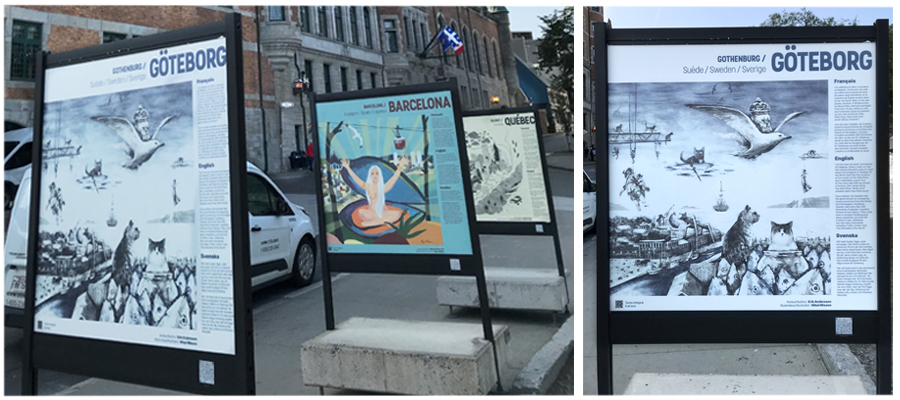
The Cities of Literature Annual Conference in Canada provided new ideas for collaboration
Publicerad 2 november 2023
On 9–13 October Quebec City hosted the Cities of Literature Annual Conference. Joakim Albrektson, principal coordinator in Gothenburg, brought back many ideas for projects here at home. There are many concrete projects we can be a part of. If only a quarter of all the ideas become reality, that’s go
There are 42 cities in 32 countries on six continents in the UNESCO Cities of Literature network. At the annual conference in October around 30 literature cities were present, with just over 50 delegates. Joakim Albrektson was attending an annual conference for the first time.
The five days were spent listening to presentations, discussing structural issues and talking about communication and joint initiatives during UNESCO’s thematic days – but also enjoying literature readings and musical experiences in Quebec City.
— We delegates also chatted more informally and got to know each other. We were at it from 8 in the morning until 10 at night. Intense days, they were.
Gothenburg was visible in the Toponymy exhibition
Joakim Albrektson held a brief presentation about Gothenburg’s City of Literature programme. But that wasn’t the only chance people had of learning something about Gothenburg. The city was also visible in the Toponymy exhibition, which opened in connection with the annual conference. It features posters that show the stories behind the place names of the Cities of Literature.
— That was good exposure, and it was great seeing the poster there in Quebec City.
Gothenburg’s contribution was created by the author Erik Andersson and the illustrator Mikael Nilsson. It includes images of cats, fish and Gustav II Adolf suspended from a building crane. The text is a humorous depiction of the rise of the city and how jöteboschkan, the dialect of Gothenburgers, came about – it was a result of people from Halland, Bohuslän and Västergötland moving to the city.
— The poster is slightly dreamy and weird, and that’s so spot on! It rubs you a bit the wrong way, it’s a little strange, just like Gothenburg, Joakim Albrektson says.
The annual conference – an opportunity to make new contacts for the future
During the conference days in Quebec City he had the opportunity to get to know earlier contacts better, but also to create new connections. One example is Lillehammer in Norway. The municipality there is a refuge for persecuted artists via the International Cities of Refuge Network (ICORN), just like Gothenburg.
— We are two of eight cities in the world that are both ICORN cities and Cities of Literature. In Quebec City we got to know each other better. I now have hopes that we will begin collaborating in greater depth.
Joakim Albrektson hasn’t yet had time to digest all his impressions. Overall, he says he took away engagement, competence and relevance from the conference – there were many highly qualified people there. One specific event that lingers is the presentation by the principal coordinator from Beirut. She held it the same week that Hamas went into Israel.
— We got a very powerful report. She could talk about the uncertainty, about what is happening here and now. It was serious and hands-on. We got an opportunity to talk about how Cities of Literature can help each other.
What will you be able to bring to Gothenburg City of Literature?
— Various project proposals from other Cities of Literature, above all. Manchester is a driving force in UNESCO’s International Mother Language Day and would like to include us in a collaboration about poetry and textiles. Vilnius is working on poetry for school pupils and wants Swedish contributions. Lviv needs money for translations of literature. Those are the kinds of projects we can be a part of.
